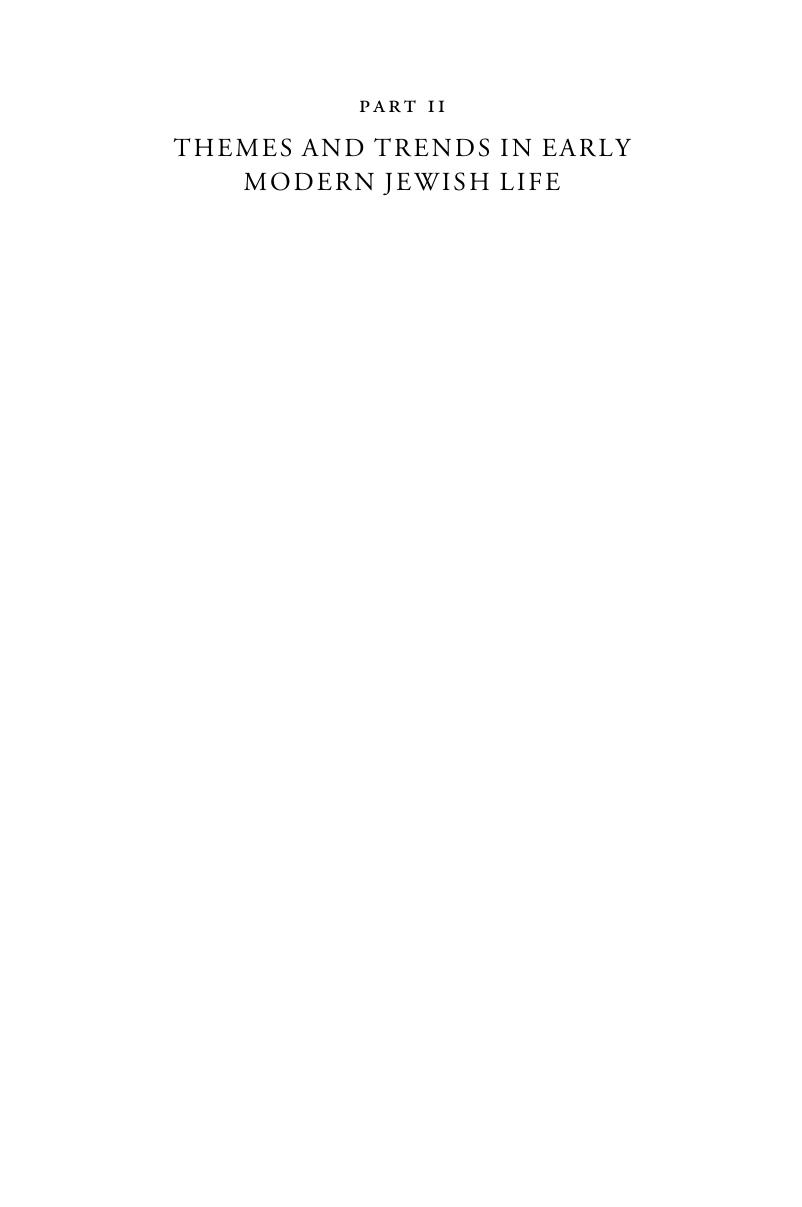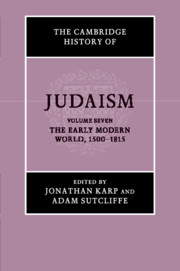Book contents
- The Cambridge History of Judaism
- The Cambridge History of Judaism
- The Early Modern World, 1500–1815
- Copyright page
- Dedication
- Contents
- Figures
- Additional material
- Introduction
- Part I The World of Early Modern Jewry, c. 1500–1650
- Part II Themes and Trends in Early Modern Jewish Life
- Part III The Jewish World, c. 1650–1815
- Index
- References
Part II - Themes and Trends in Early Modern Jewish Life
Published online by Cambridge University Press: 10 November 2017
- The Cambridge History of Judaism
- The Cambridge History of Judaism
- The Early Modern World, 1500–1815
- Copyright page
- Dedication
- Contents
- Figures
- Additional material
- Introduction
- Part I The World of Early Modern Jewry, c. 1500–1650
- Part II Themes and Trends in Early Modern Jewish Life
- Part III The Jewish World, c. 1650–1815
- Index
- References
Summary

- Type
- Chapter
- Information
- The Cambridge History of Judaism , pp. 199 - 734Publisher: Cambridge University PressPrint publication year: 2017

